Spotlight on Surveillance
October 2014: Drones: Eyes in the Sky
 This month, Spotlight returns and focuses its attention on the privacy implications of integrating drones into the domestic airspace. Congress mandated that the Federal Aviation Administration integrate drones into the National Airspace, raising concerns about both safety and privacy. As drone technology advances and becomes cheaper, state and local authorities, private industry, and individuals are increasingly operating drones. Although some states have passed legislation, there are currently no federal rules or regulations providing privacy protections against drone surveillance. EPIC recommends comprehensive privacy legislation.
This month, Spotlight returns and focuses its attention on the privacy implications of integrating drones into the domestic airspace. Congress mandated that the Federal Aviation Administration integrate drones into the National Airspace, raising concerns about both safety and privacy. As drone technology advances and becomes cheaper, state and local authorities, private industry, and individuals are increasingly operating drones. Although some states have passed legislation, there are currently no federal rules or regulations providing privacy protections against drone surveillance. EPIC recommends comprehensive privacy legislation.
December 2013: The FBI's Next Generation Identification Program
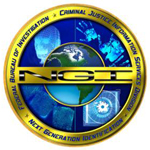 This month, Spotlight returns and shines a light on the Federal Bureau of Investigation's Next Generation Identification (NGI) program. The program is a billion dollar project to increase the Bureau's ability to collect biometric identifiers on millions of Americans. Many of the Americans whose biometric data ends up in the FBI's database will not know it or realize how long the FBI keeps their data. Full implementation is set to be done by the end of 2014 and will include face, iris, and voice recognition. Much of the data will potentially come from biometric identifiers collected at the state and local level. NGI raises a number of privacy issues including the security of the biometrics collected, the possibility of mission creep, and the prospect of ubiquitous identification. EPIC recommends comprehensive legal guidelines, based on the federal Privacy Act, for the use of biometric identifiers.
This month, Spotlight returns and shines a light on the Federal Bureau of Investigation's Next Generation Identification (NGI) program. The program is a billion dollar project to increase the Bureau's ability to collect biometric identifiers on millions of Americans. Many of the Americans whose biometric data ends up in the FBI's database will not know it or realize how long the FBI keeps their data. Full implementation is set to be done by the end of 2014 and will include face, iris, and voice recognition. Much of the data will potentially come from biometric identifiers collected at the state and local level. NGI raises a number of privacy issues including the security of the biometrics collected, the possibility of mission creep, and the prospect of ubiquitous identification. EPIC recommends comprehensive legal guidelines, based on the federal Privacy Act, for the use of biometric identifiers.
September 2007: Proposed 'Enhanced' Licenses Are Costly to Security and Privacy
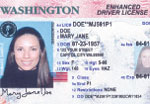 This month, Spotlight shines on "enhanced" driver's licenses, run by the Department of Homeland Security in conjunction with Arizona, Vermont, and Washington as part of the Western Hemisphere Travel Initiative ("WHTI"). The so-called "enhanced" driver's licenses are being proposed to fulfill WHTI requirements. An "enhanced" driver's license or identification card contains more data and different technology than current licenses and ID cards. Citizenship designations and wireless radio frequency identification ("RFID") technology chips will be added to the cards. Under the Western Hemisphere Travel Initiative, these new cards will be used as border identity documents. Arizona, Washington and Vermont are creating such RFID-enabled cards through pilot programs.
This month, Spotlight shines on "enhanced" driver's licenses, run by the Department of Homeland Security in conjunction with Arizona, Vermont, and Washington as part of the Western Hemisphere Travel Initiative ("WHTI"). The so-called "enhanced" driver's licenses are being proposed to fulfill WHTI requirements. An "enhanced" driver's license or identification card contains more data and different technology than current licenses and ID cards. Citizenship designations and wireless radio frequency identification ("RFID") technology chips will be added to the cards. Under the Western Hemisphere Travel Initiative, these new cards will be used as border identity documents. Arizona, Washington and Vermont are creating such RFID-enabled cards through pilot programs.
August 2007: Secure Flight Should Remain Grounded Until Security and Privacy Problems Are Resolved
 Spotlight shines this month on the Secure Flight traveler screening system, run by the Department of Homeland Security's Transportation Security Administration. The Department of Homeland Security's Fiscal Year 2008 budget request is an 8 percent increase over last year's request. Included in the $46.4 billion proposed budget for the agency is $38 million designated for Secure Flight, on top of the $144 million that has been spent on the program.Introduced in 2004, the Secure Flight has been roundly criticized and the system was suspended in 2006, because it contained massive security and privacy vulnerabilities. Though Secure Flight has been revamped, it remains fundamentally flawed.
Spotlight shines this month on the Secure Flight traveler screening system, run by the Department of Homeland Security's Transportation Security Administration. The Department of Homeland Security's Fiscal Year 2008 budget request is an 8 percent increase over last year's request. Included in the $46.4 billion proposed budget for the agency is $38 million designated for Secure Flight, on top of the $144 million that has been spent on the program.Introduced in 2004, the Secure Flight has been roundly criticized and the system was suspended in 2006, because it contained massive security and privacy vulnerabilities. Though Secure Flight has been revamped, it remains fundamentally flawed.
July 2007: E-Verify System: DHS Changes Name, But Problems Remain for U.S. Workers
 This month, Spotlight turns to the Department of Homeland Security's E-Verify system, which was recently announced after immigration reform bills failed to pass Congress. Homeland Security Secretary Michael Chertoff recently announced several changes to the employment eligibility verification program. The agency will require more than 200,000 federal contractors to use E-Verify, an increase of more than 1,076 percent over the 17,000 employers currently registered in E-Verify. The system will use an "enhanced photograph capability" that will allow employers to check photographs in E-Verify databases. DHS will expand the number of databases E-Verify checks to include visa and passport databases; and the agency is asking states to "voluntarily" allow DHS access to their motor vehicle databases. DHS will require employers to fire employees if they were unable to resolve "no match" discrepancies within 90 days. If the employers do not terminate the workers' employment, the businesses would face fines of $11,000 or more. DHS also will raise fines against employers by 25 percent and increasingly use criminal action against employers, as opposed to administrative action.
This month, Spotlight turns to the Department of Homeland Security's E-Verify system, which was recently announced after immigration reform bills failed to pass Congress. Homeland Security Secretary Michael Chertoff recently announced several changes to the employment eligibility verification program. The agency will require more than 200,000 federal contractors to use E-Verify, an increase of more than 1,076 percent over the 17,000 employers currently registered in E-Verify. The system will use an "enhanced photograph capability" that will allow employers to check photographs in E-Verify databases. DHS will expand the number of databases E-Verify checks to include visa and passport databases; and the agency is asking states to "voluntarily" allow DHS access to their motor vehicle databases. DHS will require employers to fire employees if they were unable to resolve "no match" discrepancies within 90 days. If the employers do not terminate the workers' employment, the businesses would face fines of $11,000 or more. DHS also will raise fines against employers by 25 percent and increasingly use criminal action against employers, as opposed to administrative action.
June 2007: "National Network" of Fusion Centers Raises Specter of COINTELPRO
 This month, Spotlight shines on fusion centers, which have received $380 million in federal grants and millions more from state governments. There are 43 current and planned fusion centers in the U.S., and some states have more than one. A "fusion center," according to the Department of Justice, is a "mechanism to exchange information and intelligence, maximize resources, streamline operations, and improve the ability to fight crime and terrorism by analyzing data from a variety of sources," which includes private sector firms and anonymous tipsters. When local and state fusion centers were first created, they were purely oriented toward counterterrorism, but, over time and with the escalating involvement of federal officials, fusion centers "have increasingly gravitated toward an all-crimes and even broader all-hazards approach."
This month, Spotlight shines on fusion centers, which have received $380 million in federal grants and millions more from state governments. There are 43 current and planned fusion centers in the U.S., and some states have more than one. A "fusion center," according to the Department of Justice, is a "mechanism to exchange information and intelligence, maximize resources, streamline operations, and improve the ability to fight crime and terrorism by analyzing data from a variety of sources," which includes private sector firms and anonymous tipsters. When local and state fusion centers were first created, they were purely oriented toward counterterrorism, but, over time and with the escalating involvement of federal officials, fusion centers "have increasingly gravitated toward an all-crimes and even broader all-hazards approach."
May 2007: National Employment Database Could Prevent Millions of Citizens From Obtaining Jobs
 This month, Spotlight scrutinizes the national employment verification system now under consideration in Congress. The national database is proposed to prevent undocumented immigrants from obtaining employment in the United States, but it could instead prevent millions of Americans from obtaining lawful employment. The federal program will also be expensive. The Government Accountability Office has estimated that a nationwide expansion of the Basic Pilot program would cost $11.7 billion.
This month, Spotlight scrutinizes the national employment verification system now under consideration in Congress. The national database is proposed to prevent undocumented immigrants from obtaining employment in the United States, but it could instead prevent millions of Americans from obtaining lawful employment. The federal program will also be expensive. The Government Accountability Office has estimated that a nationwide expansion of the Basic Pilot program would cost $11.7 billion.
April 2007: SAVE System Can't Save Itself From 11-Year History of Inaccuracy, Unreliability
 This month, Spotlight scrutinizes the Department of Homeland Security's Systematic Alien Verification for Entitlements ("SAVE") program. For Fiscal Year 2008, DHS seeks $21.6 million for the program run by Citizenship and Immigration Services. Under the Department of Homeland Security's draft regulations for the national identification scheme created under the REAL ID Act, SAVE is one of the four systems that States are required to use to verify applicant information. The REAL ID system is supposed to be implemented by May 2008, however SAVE is full of problems and it is unlikely that it will be ready by then.
This month, Spotlight scrutinizes the Department of Homeland Security's Systematic Alien Verification for Entitlements ("SAVE") program. For Fiscal Year 2008, DHS seeks $21.6 million for the program run by Citizenship and Immigration Services. Under the Department of Homeland Security's draft regulations for the national identification scheme created under the REAL ID Act, SAVE is one of the four systems that States are required to use to verify applicant information. The REAL ID system is supposed to be implemented by May 2008, however SAVE is full of problems and it is unlikely that it will be ready by then.
March 2007: Federal REAL ID Proposal Threatens Privacy and Security
 More than two years after Congress rushed through passage of the REAL ID Act, the Department of Homeland Security ("DHS") announced on March 1 proposed regulations that would turn the state driver's license into a national identity card. The estimated cost of the plan could be as high as $23.1 billion, according to the federal government. The Department of Homeland Security regulations for Real ID would (1) impose more difficult standards for acceptable identification documents that could limit the ability of individuals to get a state drivers license; (2) compel data verification procedures that the federal government itself is not capable of following; (3) mandate minimum data elements required on the face of and in the machine readable zone of the card; (4) require changes to the design of licenses and identification cards (4) expand schedules and procedures for retention and distribution of identification documents and other personal data; and (5) dictate security standards for the card, state motor vehicle facilities, and the personal data and documents collected in state motor vehicle databases.
More than two years after Congress rushed through passage of the REAL ID Act, the Department of Homeland Security ("DHS") announced on March 1 proposed regulations that would turn the state driver's license into a national identity card. The estimated cost of the plan could be as high as $23.1 billion, according to the federal government. The Department of Homeland Security regulations for Real ID would (1) impose more difficult standards for acceptable identification documents that could limit the ability of individuals to get a state drivers license; (2) compel data verification procedures that the federal government itself is not capable of following; (3) mandate minimum data elements required on the face of and in the machine readable zone of the card; (4) require changes to the design of licenses and identification cards (4) expand schedules and procedures for retention and distribution of identification documents and other personal data; and (5) dictate security standards for the card, state motor vehicle facilities, and the personal data and documents collected in state motor vehicle databases.
February 2007: Proposed Federal Budget Funds Questionable Surveillance Programs
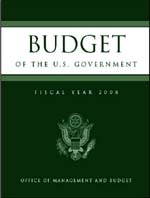 President Bush's $2.9 trillion budget proposal for Fiscal Year 2008 is a 4.2 percent increase over last year's budget. Agencies, other than the departments of State, Defense and Homeland Security, will receive increases of about 1 percent, less than the rate of inflation. Assistance to state and local law enforcement for community policing and local prosecutions has been cut by 70 percent. The proposed budget includes funding increases for several questionable surveillance programs, among them: Secure Flight, Automated Targeting System, and Western Hemisphere Travel Initiative PASS Card, Transportation Worker Identification Credential, Employee Eligibility Verification program, and the national DNA database.
President Bush's $2.9 trillion budget proposal for Fiscal Year 2008 is a 4.2 percent increase over last year's budget. Agencies, other than the departments of State, Defense and Homeland Security, will receive increases of about 1 percent, less than the rate of inflation. Assistance to state and local law enforcement for community policing and local prosecutions has been cut by 70 percent. The proposed budget includes funding increases for several questionable surveillance programs, among them: Secure Flight, Automated Targeting System, and Western Hemisphere Travel Initiative PASS Card, Transportation Worker Identification Credential, Employee Eligibility Verification program, and the national DNA database.
November 2006: Problem-Filled Traveler Redress Program Won't Fly
 The Department of Homeland Security recently announced that it will launch the Traveler Redress Inquiry Program on February 20, 2007. DHS described TRIP as "a central gateway to address watch list misidentification issues, situations where individuals believe they have faced screening problems at immigration points of entry, or have been unfairly or incorrectly delayed, denied boarding or identified for additional screening at our nation's transportation hubs." There are significant problems with the current redress process for travelers mistakenly matched to watch lists, but TRIP does not solve them.
The Department of Homeland Security recently announced that it will launch the Traveler Redress Inquiry Program on February 20, 2007. DHS described TRIP as "a central gateway to address watch list misidentification issues, situations where individuals believe they have faced screening problems at immigration points of entry, or have been unfairly or incorrectly delayed, denied boarding or identified for additional screening at our nation's transportation hubs." There are significant problems with the current redress process for travelers mistakenly matched to watch lists, but TRIP does not solve them.
October 2006: Customs and Border Protection's Automated System Targets U.S. Citizens
 The Automated Targeting System, part of Department of Homeland Security's Customs and Border Protection, is under the Spotlight this month. For Fiscal Year 2007, President Bush has requested $1.94 billion for border security, which includes the Automated Targeting System. The system was originally established to assess cargo that may pose a threat to the United States. Now the Department of Homeland Security proposes to use the system to establish a secret terrorism risk profile for millions of people, most of whom will be U.S. citizens. Simultaneously, it is seeking to remove Privacy Act safeguards for the database.
The Automated Targeting System, part of Department of Homeland Security's Customs and Border Protection, is under the Spotlight this month. For Fiscal Year 2007, President Bush has requested $1.94 billion for border security, which includes the Automated Targeting System. The system was originally established to assess cargo that may pose a threat to the United States. Now the Department of Homeland Security proposes to use the system to establish a secret terrorism risk profile for millions of people, most of whom will be U.S. citizens. Simultaneously, it is seeking to remove Privacy Act safeguards for the database.
September 2006: With Some Electronic Voting Systems, Not All Votes Count
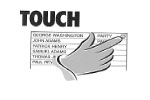 About 87% of voters will use either optical scan or direct recording electronic (also called touch screen) systems in November 2006, according to a study by Election Data Services, a consulting firm that tracks election information. There are myriad problems associated with the use of electronic voting systems, but though there are safeguards, most of the local election jurisdictions have not put these in place. About $3.8 billion has been budgeted for these electronic voting systems.
About 87% of voters will use either optical scan or direct recording electronic (also called touch screen) systems in November 2006, according to a study by Election Data Services, a consulting firm that tracks election information. There are myriad problems associated with the use of electronic voting systems, but though there are safeguards, most of the local election jurisdictions have not put these in place. About $3.8 billion has been budgeted for these electronic voting systems.
August 2006: Homeland Security PASS Card: Leave Home Without It
 The Intelligence Reform and Terrorism Prevention Act of 2004 mandated that, by January 2008, the departments of Homeland Security and State develop and implement a plan to require U.S. citizens and foreign nationals to present a passport or other documents to prove identity and citizenship when entering the United States from certain countries in North, Central or South America. This program is called the Western Hemisphere Travel Initiative, and its impact is the greatest upon U.S. citizens who routinely cross the border. Accepted documents for U.S. citizens will be either a valid U.S. passport or the proposed People Access Security Service (PASS) card, which, if adopted as proposed, would include a long-range wireless technology that would create an increased security risk.
The Intelligence Reform and Terrorism Prevention Act of 2004 mandated that, by January 2008, the departments of Homeland Security and State develop and implement a plan to require U.S. citizens and foreign nationals to present a passport or other documents to prove identity and citizenship when entering the United States from certain countries in North, Central or South America. This program is called the Western Hemisphere Travel Initiative, and its impact is the greatest upon U.S. citizens who routinely cross the border. Accepted documents for U.S. citizens will be either a valid U.S. passport or the proposed People Access Security Service (PASS) card, which, if adopted as proposed, would include a long-range wireless technology that would create an increased security risk.
July 2006: Transportation Worker ID Card Riddled With Privacy and Security Holes
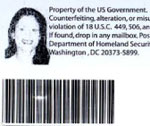 The Transportation Worker Identification Credential (TWIC) is supposed to be a secure, biometric ID card for those hoping to work in the transportation industry. This program affects 750,000 land and sea transportation workers, including longshoremen, crews of vessels, rail workers, and truck drivers. However, the Department of Homeland Security's Inspector General recently released a report detailing significant security and privacy problems in the TWIC program, and the agency has delayed full implementation. About $65 million has been spent on this program, with a projected cost up to $1.9 billion.
The Transportation Worker Identification Credential (TWIC) is supposed to be a secure, biometric ID card for those hoping to work in the transportation industry. This program affects 750,000 land and sea transportation workers, including longshoremen, crews of vessels, rail workers, and truck drivers. However, the Department of Homeland Security's Inspector General recently released a report detailing significant security and privacy problems in the TWIC program, and the agency has delayed full implementation. About $65 million has been spent on this program, with a projected cost up to $1.9 billion.
June 2006: Treasury's International Finance Tracking Program of Questionable Legality
 On June 23, 2006, news articles by the Los Angeles Times, New York Times and Wall Street Journal described a massive Treasury Department program to secretly review international financial transactions, including those of American citizens and corporations. The Treasury Department has requested $58.6 billion for Fiscal Year 2007. Its Financial Crimes Enforcement Network, which includes the international finance tracking program, would receive $90 million.
On June 23, 2006, news articles by the Los Angeles Times, New York Times and Wall Street Journal described a massive Treasury Department program to secretly review international financial transactions, including those of American citizens and corporations. The Treasury Department has requested $58.6 billion for Fiscal Year 2007. Its Financial Crimes Enforcement Network, which includes the international finance tracking program, would receive $90 million.
May 2006: Veterans Affairs' Security Failures Put Data of Military Personnel at Risk
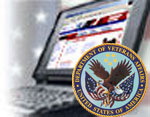 Veterans Affairs has been in the news recently because of a huge information security breach that resulted in the theft of unencrypted data affecting 26.5 million people. The agency has estimated that it will cost between $100 million to $500 million to prevent and cover possible losses from the data theft. Though the theft occurred on May 3, 2006, the agency waited until May 22 to inform those who were affected. The delay was just one of many failures by Veterans Affairs in this incident. For Fiscal Year 2007, Veterans Affairs has requested $80.6 billion, $1.3 billion of which is for the agency's information technology systems.
Veterans Affairs has been in the news recently because of a huge information security breach that resulted in the theft of unencrypted data affecting 26.5 million people. The agency has estimated that it will cost between $100 million to $500 million to prevent and cover possible losses from the data theft. Though the theft occurred on May 3, 2006, the agency waited until May 22 to inform those who were affected. The delay was just one of many failures by Veterans Affairs in this incident. For Fiscal Year 2007, Veterans Affairs has requested $80.6 billion, $1.3 billion of which is for the agency's information technology systems.
April 2006: Expansion of Basic Pilot Would Steer Employment Verification Toward Disaster
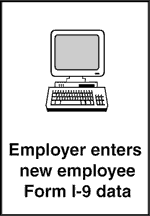 This month, Spotlight surveys the Basic Pilot employment eligibility verification system conducted jointly by the Social Security Administration (SSA) and the Department of Homeland Security. Lawmakers are debating a bill, H.R. 4437, that would greatly expand the Basic Pilot system, making its use mandatory for all employers nationwide. This would cost $405 million from 2006-2010, according to the Congressional Budget Office. In the Fiscal Year 2007 budget request, President Bush seeks $135 million to expand Basic Pilot. However, a recent Government Accountability Office review of the employment eligibility verification program shows that the system is riddled with problems that would be exacerbated by nationwide expansion.
This month, Spotlight surveys the Basic Pilot employment eligibility verification system conducted jointly by the Social Security Administration (SSA) and the Department of Homeland Security. Lawmakers are debating a bill, H.R. 4437, that would greatly expand the Basic Pilot system, making its use mandatory for all employers nationwide. This would cost $405 million from 2006-2010, according to the Congressional Budget Office. In the Fiscal Year 2007 budget request, President Bush seeks $135 million to expand Basic Pilot. However, a recent Government Accountability Office review of the employment eligibility verification program shows that the system is riddled with problems that would be exacerbated by nationwide expansion.
March 2006: IRS's Inadequate Security Leaves Taxpayer Data Largely Unprotected
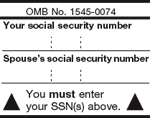 This month, Spotlight surveys the Internal Revenue Service amidst recent questions concerning its information-sharing regulations and security systems. Recently, IRS has come under fire for issues related to individual privacy. Government reports have found that the agency has poor physical and electronic security, and it has had considerable trouble with its contractors improperly accessing and collecting sensitive taxpayer information.
This month, Spotlight surveys the Internal Revenue Service amidst recent questions concerning its information-sharing regulations and security systems. Recently, IRS has come under fire for issues related to individual privacy. Government reports have found that the agency has poor physical and electronic security, and it has had considerable trouble with its contractors improperly accessing and collecting sensitive taxpayer information.
February 2006: Anti-terrorism Funds Wrongly Spent on Highway Safety Programs
 This month, we Spotlight the Highway Watch program, a cooperative agreement between the Department of Homeland Security's Transportation Security Administration (TSA) and the American Trucking Association (ATA). About $40 million in federal funds have been spent on the program, and $4.8 million in funds have been requested for Fiscal Year 2007. The program aims to provide anti-terrorism training to "truck and bus drivers, school bus drivers, highway maintenance crews, bridge and tunnel toll collectors and others" so that they will be able to "recognize and report suspicious activity." However, the Highway Watch program began as, and continues to be, a safety awareness program. As such, it should not receive anti-terrorism grants from Homeland Security.
This month, we Spotlight the Highway Watch program, a cooperative agreement between the Department of Homeland Security's Transportation Security Administration (TSA) and the American Trucking Association (ATA). About $40 million in federal funds have been spent on the program, and $4.8 million in funds have been requested for Fiscal Year 2007. The program aims to provide anti-terrorism training to "truck and bus drivers, school bus drivers, highway maintenance crews, bridge and tunnel toll collectors and others" so that they will be able to "recognize and report suspicious activity." However, the Highway Watch program began as, and continues to be, a safety awareness program. As such, it should not receive anti-terrorism grants from Homeland Security.
January 2006: Legality of NSA's Secret Eavesdropping Program Is Suspect and Cost is Unknown
 Last month, the New York Times reported that President George W. Bush had issued an order in 2002 allowing the National Security Agency unprecedented authority to conduct domestic surveillance. This month, the National Security Agency, the largest intelligence organization in the federal government, is under the Spotlight. The NSA was created to conduct international surveillance - to intercept and analyze phone calls, e-mails, faxes and other communications, searching for threats to national security. The agency's budget is unknown; a federal judge ruled in 1999 that there was no requirement to reveal the intelligence budget, of which NSA is a part. However, it has been estimated that the NSA's budget is $6 billion. The agency has said that if it (and its military alter ego the Central Security Service) "were considered a corporation in terms of dollars spent, floor space occupied, and personnel employed, it would rank in the top 10 percent of the Fortune 500 companies."
Last month, the New York Times reported that President George W. Bush had issued an order in 2002 allowing the National Security Agency unprecedented authority to conduct domestic surveillance. This month, the National Security Agency, the largest intelligence organization in the federal government, is under the Spotlight. The NSA was created to conduct international surveillance - to intercept and analyze phone calls, e-mails, faxes and other communications, searching for threats to national security. The agency's budget is unknown; a federal judge ruled in 1999 that there was no requirement to reveal the intelligence budget, of which NSA is a part. However, it has been estimated that the NSA's budget is $6 billion. The agency has said that if it (and its military alter ego the Central Security Service) "were considered a corporation in terms of dollars spent, floor space occupied, and personnel employed, it would rank in the top 10 percent of the Fortune 500 companies."
December 2005: D.C.'s Camera System Should Focus on Emergencies, Not Daily Life
 Tens of millions in federal homeland security funds have been allotted to surveillance systems such as the Washington D.C. Metropolitan Police Department's Closed Circuit Television System (CCTV). The D.C. cameras are turned on only during major events and in emergency situations, but after the July bombings in London, D.C. Mayor Anthony Williams called for more federal funds to expand the use of the camera surveillance system. Mayor Williams "also proposed adding cameras to neighborhoods, parks, recreation centers and commercial areas throughout the city." Camera surveillance networks are proliferating in cities across the country, but studies show that such systems have little effect on crime. It is more effective to place more officers on the streets than have them watching people on monitors. The systems also raise privacy issues. Without tight legal controls on the use of camera surveillance systems, there are significant risks of misuse or abuse.
Tens of millions in federal homeland security funds have been allotted to surveillance systems such as the Washington D.C. Metropolitan Police Department's Closed Circuit Television System (CCTV). The D.C. cameras are turned on only during major events and in emergency situations, but after the July bombings in London, D.C. Mayor Anthony Williams called for more federal funds to expand the use of the camera surveillance system. Mayor Williams "also proposed adding cameras to neighborhoods, parks, recreation centers and commercial areas throughout the city." Camera surveillance networks are proliferating in cities across the country, but studies show that such systems have little effect on crime. It is more effective to place more officers on the streets than have them watching people on monitors. The systems also raise privacy issues. Without tight legal controls on the use of camera surveillance systems, there are significant risks of misuse or abuse.
November 2005: Facial Recognition Systems Have an Ugly Effect on Personal Privacy
 In Fiscal Year 2006, the federal government plans to add facial recognition checks to all visa applications, which already include fingerprint biometrics. This is despite the Government Accountability Office's estimate that incorporating biometric systems into visas would cost from $1.3 billion to $2.9 billion for startup, and $700 million to $1.5 billion for annual operating costs. New U.S. passports and national identification cards created under the REAL ID Act of 2005 will both include digital photographs that can be linked to facial recognition systems. However, several tests, including those conducted by the National Institute for Standards and Technology (NIST) and the Department of Defense, show that facial recognition systems can be easily befuddled by uncooperative subjects and changes in the environment, such as positioning or lighting. Such facial recognition systems create significant privacy risks because the technique is surreptitious, the prospects for extensive profiling are clear, and there are no laws that currently regulate these systems to prevent abuse.
In Fiscal Year 2006, the federal government plans to add facial recognition checks to all visa applications, which already include fingerprint biometrics. This is despite the Government Accountability Office's estimate that incorporating biometric systems into visas would cost from $1.3 billion to $2.9 billion for startup, and $700 million to $1.5 billion for annual operating costs. New U.S. passports and national identification cards created under the REAL ID Act of 2005 will both include digital photographs that can be linked to facial recognition systems. However, several tests, including those conducted by the National Institute for Standards and Technology (NIST) and the Department of Defense, show that facial recognition systems can be easily befuddled by uncooperative subjects and changes in the environment, such as positioning or lighting. Such facial recognition systems create significant privacy risks because the technique is surreptitious, the prospects for extensive profiling are clear, and there are no laws that currently regulate these systems to prevent abuse.
October 2005: Registered Traveler Card: A Privatized Passenger ID
 The government has spent about $20 million on a test version of the Transportation Security Administration's Registered Traveler program. The pilot program began a year ago and recently ended at five airports; however, a private business is continuing the program at Orlando International Airport and there are plans to expand the air traveler prescreening program to many airports across the nation. No money has been allotted toward the program in the Fiscal Year 2006 budget; however, TSA continues to pay $30 to $50 apiece for background checks on applicants and members of the private program, named "Clear" and operated by Verified Identity Pass Inc.
The government has spent about $20 million on a test version of the Transportation Security Administration's Registered Traveler program. The pilot program began a year ago and recently ended at five airports; however, a private business is continuing the program at Orlando International Airport and there are plans to expand the air traveler prescreening program to many airports across the nation. No money has been allotted toward the program in the Fiscal Year 2006 budget; however, TSA continues to pay $30 to $50 apiece for background checks on applicants and members of the private program, named "Clear" and operated by Verified Identity Pass Inc.
September 2005: SEVIS Database Tracks Every Move of Foreign Students, Visitors
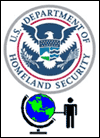 The Student and Exchange Visitor Information System (SEVIS) is run by the Department of Homeland Security's Bureau of Immigration and Customs Enforcement (ICE). SEVIS is also a part of the United States Visitor and Immigrant Status Indicator Technology (US-VISIT) program, which has been criticized as flawed. The federal government has expended more than $38.6 million for the program; the system is to be further funded by fees paid by the students and exchange visitors. As of April 2005, SEVIS includes 113 data items on more than 840,000 foreign students, exchange visitors, and their dependents.
The Student and Exchange Visitor Information System (SEVIS) is run by the Department of Homeland Security's Bureau of Immigration and Customs Enforcement (ICE). SEVIS is also a part of the United States Visitor and Immigrant Status Indicator Technology (US-VISIT) program, which has been criticized as flawed. The federal government has expended more than $38.6 million for the program; the system is to be further funded by fees paid by the students and exchange visitors. As of April 2005, SEVIS includes 113 data items on more than 840,000 foreign students, exchange visitors, and their dependents.
August 2005: Unmanned Planes Offer New Opportunities for Clandestine Government Tracking
 Unmanned aerial vehicles (UAVs), also called drones, "are defined as a powered aerial vehicle that does not carry a human operator, uses aerodynamic forces to provide lift, can fly autonomously or be piloted remotely, can be expendable or recoverable, and can carry lethal or nonlethal payloads." The different types of UAVs can range in cost from $350,000 to $4.5 million each. For Fiscal Year 2006, the Department of Homeland Security is budgeting $58 million for operation and maintenance of deep water assets, including funds for UAVs. The Homeland Security Appropriations Act provided $10 million for the use of UAVs in border security for Fiscal Year 2005.
Unmanned aerial vehicles (UAVs), also called drones, "are defined as a powered aerial vehicle that does not carry a human operator, uses aerodynamic forces to provide lift, can fly autonomously or be piloted remotely, can be expendable or recoverable, and can carry lethal or nonlethal payloads." The different types of UAVs can range in cost from $350,000 to $4.5 million each. For Fiscal Year 2006, the Department of Homeland Security is budgeting $58 million for operation and maintenance of deep water assets, including funds for UAVs. The Homeland Security Appropriations Act provided $10 million for the use of UAVs in border security for Fiscal Year 2005.
July 2005: US-VISIT Rolls Out the Unwelcome Mat
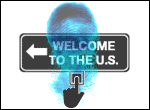 The Department of Homeland Security (DHS) requests $390 million for the United States Visitor and Immigrant Status Indicator Technology (US-VISIT) border security program for Fiscal Year 2006. This represents an increase from $340 million for FY 2005, and an initial $328 million for FY 2004, and DHS has estimated that the program will cost $7.2 billion through 2014. US-VISIT is an integrated government-wide program intended to improve the nation's capability to collect information about foreign nationals who travel to the United States, as well as control the pre-entry, entry, status, and exit of these travelers. However, in its short existence, the program has been replete with problems.
The Department of Homeland Security (DHS) requests $390 million for the United States Visitor and Immigrant Status Indicator Technology (US-VISIT) border security program for Fiscal Year 2006. This represents an increase from $340 million for FY 2005, and an initial $328 million for FY 2004, and DHS has estimated that the program will cost $7.2 billion through 2014. US-VISIT is an integrated government-wide program intended to improve the nation's capability to collect information about foreign nationals who travel to the United States, as well as control the pre-entry, entry, status, and exit of these travelers. However, in its short existence, the program has been replete with problems.
June 2005: Transportation Agency's Plan to X-Ray Travelers Should Be Stripped of Funding
 Airport security has undergone significant changes since the terrorist attacks of Sept. 11, 2001. Recently, the Transportation Security Administration (TSA) announced a proposal to purchase and deploy "backscatter" X-ray machines to search air travelers at select airports. TSA said it believes that use of the machines is less invasive than pat-down searches. However, these machines, which show detailed images of a person's naked body, are equivalent to a "virtual strip search" for all air travelers. This proposal, along with the agency's controversial plan to profile air travelers, shows extraordinary disregard for the privacy rights of air travelers. The Department of Homeland Security is requesting $72 million to invest in detection systems, which includes funding for the backscatter machines, which cost between $100,000 and $200,000 each.
Airport security has undergone significant changes since the terrorist attacks of Sept. 11, 2001. Recently, the Transportation Security Administration (TSA) announced a proposal to purchase and deploy "backscatter" X-ray machines to search air travelers at select airports. TSA said it believes that use of the machines is less invasive than pat-down searches. However, these machines, which show detailed images of a person's naked body, are equivalent to a "virtual strip search" for all air travelers. This proposal, along with the agency's controversial plan to profile air travelers, shows extraordinary disregard for the privacy rights of air travelers. The Department of Homeland Security is requesting $72 million to invest in detection systems, which includes funding for the backscatter machines, which cost between $100,000 and $200,000 each.
May 2005: More Cities Deploy Camera Surveillance Systems with Federal Grant Money
 The Department of Homeland Security (DHS) has requested more than $2 billion to finance grants to state and local governments for homeland security needs. Some of this money is being used by state and local governments to create networks of surveillance cameras to watch over the public in the streets, shopping centers, at airports and more. However, studies have found that such surveillance systems have little effect on crime, and that it is more effective to place more officers on the streets and improve lighting in high-crime areas. There are significant concerns about citizens' privacy rights and misuse or abuse of the system.
The Department of Homeland Security (DHS) has requested more than $2 billion to finance grants to state and local governments for homeland security needs. Some of this money is being used by state and local governments to create networks of surveillance cameras to watch over the public in the streets, shopping centers, at airports and more. However, studies have found that such surveillance systems have little effect on crime, and that it is more effective to place more officers on the streets and improve lighting in high-crime areas. There are significant concerns about citizens' privacy rights and misuse or abuse of the system.
April 2005: Homeland Security ID Card Is Not So Secure
 The Department of Homeland Security Access Card (DAC) has vulnerabilities associated with its use of radio frequency identification (RFID) and Bluetooth technologies, biometric identifiers and PIN backup system. But there are also risks that come from the DAC's "mission creep"; the Department also wants the card to be used as a payment device for everyday items. The Department requests $6 million for the DAC program in FY 2006.
The Department of Homeland Security Access Card (DAC) has vulnerabilities associated with its use of radio frequency identification (RFID) and Bluetooth technologies, biometric identifiers and PIN backup system. But there are also risks that come from the DAC's "mission creep"; the Department also wants the card to be used as a payment device for everyday items. The Department requests $6 million for the DAC program in FY 2006.
Exchange with CNET News.com
- Phil Libin's May 17, 2005 column
- EPIC's response (also available in pdf)
Related News
March 2005: America's Shield: Surveillance at Our Borders
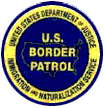 "Eyes on until hands on" - The motto of the U.S. Customs and Border Protection's Intelligence Operations
"Eyes on until hands on" - The motto of the U.S. Customs and Border Protection's Intelligence Operations
The U.S. Customs and Border Protection ("CBP") agency wants $51.3 million in Fiscal Year 2006 to spend on its America's Shield Initiative, an upgrade of the existing Integrated Surveillance Intelligence System. America's Shield received $88.1 million in 2005, a huge jump from the $24.2 million it received in 2004. The agency's estimate in August 2004 was that full budget requests through 2010 would add up to $2 billion.
Share this page:
Subscribe to the EPIC Alert
The EPIC Alert is a biweekly newsletter highlighting emerging privacy issues.







